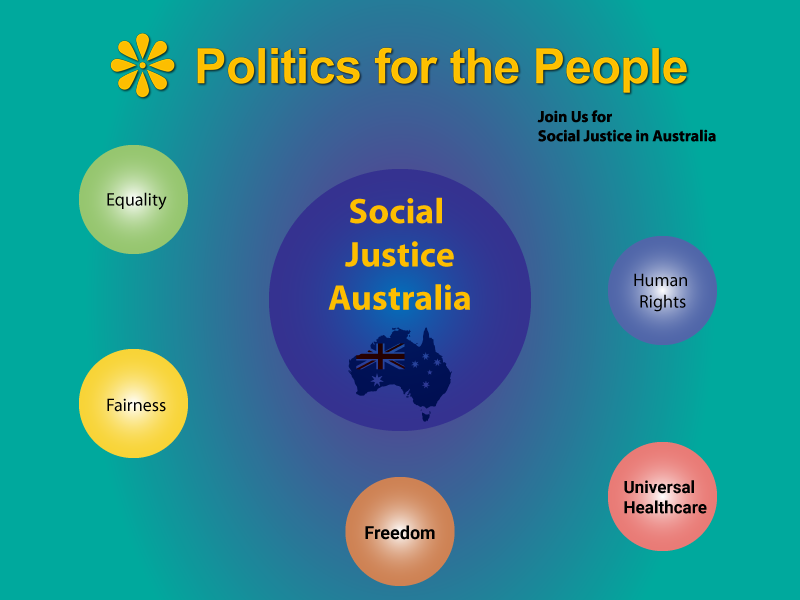Introduction to Social Change in Australia
In Australia today, the call for social reform is more pressing than ever. Issues like rising income inequality, healthcare accessibility, and environmental degradation demand urgent attention and action. This article delves into how ordinary Australians can become pivotal in enacting significant and positive societal transformations, exploring various strategies from grassroots movements to informed voting.
The Power of Grassroots Movements
The Role of Community Initiatives
Grassroots movements originate from the community level, where individuals or groups organize to address local or national issues directly affecting them. These movements are vital as they reflect the direct voices and concerns of the populace, leading to more tailored and often more sustainable solutions. Examples include local environmental campaigns or community-based support networks.
How to Start a Local Movement
Initiating a grassroots movement requires understanding the issue deeply, gathering like-minded individuals, and organizing effectively. Start by hosting community meetings to discuss the issues, setting clear goals, and delegating tasks. Utilize local media and social platforms to recruit more supporters. Persistence is key, as building momentum takes time and effort.
Amplifying Voices Through Social Media Activism
Harnessing Digital Platforms for Change
Social media activism involves using platforms like Twitter, Facebook, and Instagram to advocate for social justice causes. It’s a powerful way to spread messages quickly and widely, engage with a larger audience, and organize collective actions like petitions and protests. Sharing stories and information can help sway public opinion and prompt legislative changes.
Strategies for Effective Online Advocacy
Effective social media advocacy requires consistency, clarity of message, and engagement with followers. Use hashtags to increase the visibility of your posts, collaborate with influencers who share your values, and always encourage constructive dialogue. Monitoring the impact of your campaigns through analytics can guide you to refine your strategies.
Using Voting Power for Change
Voting as a Tool for Advocacy
Voting is one of the most straightforward yet powerful tools for advocating change. By choosing candidates and parties that align with social justice values, voters can influence the direction of government policies and priorities. Understanding the platforms of various candidates and their historical actions can guide informed voting decisions.
Understanding the Impact of Your Vote
Every vote contributes to shaping the policies that govern us. Educating yourself and others about the importance of each vote can lead to increased voter turnout and more representative governance. Highlighting the direct link between voting and policy outcomes can empower communities to take part more actively in elections.
Building Partnerships for Wider Impact
Collaborating with Like-Minded Entities
Effective social change often requires the collaboration of various stakeholders, including NGOs, businesses, and other community groups. These partnerships can pool resources, share knowledge, and amplify advocacy efforts. Finding potential partners with aligned goals and negotiating collaborative agreements are crucial steps.
Case Studies of Successful Collaborations
Illustrate successful examples, such as partnerships between environmental groups and companies to promote sustainable practices, or collaborations between healthcare providers and non-profits to improve community health access.
The Importance of Continuous Education
Staying Informed and Engaged
Continuous education is essential for effective advocacy. Stay updated with the latest research, policy changes, and social trends. Attending workshops, subscribing to relevant publications, and taking part in forums can keep you informed and ready to act when opportunities arise.
Resources for Lifelong Learning
Provide resources such as online courses, local seminars, and educational websites that focus on social issues. Encouraging ongoing education helps keep a well-informed advocate community, crucial for sustained social change.
Conclusion
Driving social change in Australia requires a multifaceted approach, involving grassroots initiatives, strategic use of social media, informed voting, partnerships, and continuous education. By engaging in these areas, every Australian can contribute to shaping a more fair and sustainable society.
Call to Action
Take the first step today! Join a local initiative, educate yourself on the issues, vote wisely, and use social media to voice your concerns. What steps will you take to initiate change?
Questions for Readers
1. What social justice issues are you most enthusiastic about, and how are you involved?
2. Which digital platform do you find most effective for social advocacy and why?
Tipping points need Paradigm Shifts: Paradigm Shifts are Tipping Points: https://thehopefulrealist.com/2014/03/16/tipping-points-need-paradigm-shifts-paradigm-shifts-are-tipping-points/
Research Finds Tipping Point for Large-Scale Social Change: https://www.asc.upenn.edu/news-events/news/research-finds-tipping-point-large-scale-social-change
Grassroots Campaigners on How They Got it Done: https://www.theguardian.com/technology/2021/sep/25/good-ideas-good-work-and-good-luck-australian-grassroots-campaigners-on-how-they-got-it-done
Social Media Activism: https://sproutsocial.com/insights/social-media-activism/
Australian Electoral Commission: https://www.aec.gov.au/voting/files/guide-enrolling-voting-large-print.pdf

